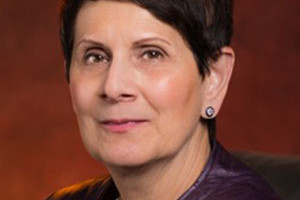Storytelling has been key to learning since the beginning of humankind. Case studies are a form of storytelling that often includes learning objectives, reflection and analysis. This book by Julie K. Johnson, Helen W. Haskell and Paul R. Barach uses storytelling to explore medical cases from the viewpoints of surviving family members. The amount of effort to collect such stories must have been astounding, but the reader benefits in incalculable ways.
The book’s stories illuminate how the industry might move from a clinician-centered system of care to a patient and family-centered system of care. The authors refer to Paul Batalden’s quote, “Every system is perfectly designed to get the results it gets.” For example, the results of the current medical educations system are knowledgeable diagnosticians who are focused on the individual physician-patient dyad. The authors examined 153 competencies across disciplines internationally that seem to correlate with good outcomes. The book’s stories are organized by these competencies:
- Medical knowledge, patient care
- Professionalism
- Interpersonal/communication skills
- Practice-based learning and improvement
- System-based practice
- Interprofessional collaboration
- Personal and professional development
One sees where professionalism and interpersonal/communication skills are greater important deficits for the families than knowledge or patient care aspects. This sets up the challenge for the reader, as the authors promote, to think differently about how to emotionally and intellectually engage patients and providers in healthcare transformation.
Discussed are 24 cases resulting from in- and out-patient settings in locations throughout the English-speaking world. One poignant case concerned a routine endoscopic procedure, an endoscopic retrograde cholangiopancreatography (ERCP). Post discharge, the patient began regurgitating, perspiring and was in pain. A telephone call to the office nurse resulted in a Tylenol suggestion. Then the physician called and suggested soup. A family member demanded a direct admission. The patient arrived at the emergency room with no forwarding message from the physician so she waited 12 hours for pain meds, but a full workup was achieved. The physician was not returning any emergency room calls as it was after 5 p.m. and the covering colleague said “not my patient.” As the patient deteriorated, a catheter was inserted. Then she was moved to the ICU and then to CCU. Diagnosis: sepsis. No record was ever found for the catheter order nor the ICU or CCU admissions. By now hospital specialists were attending to the patient with no sign of the original surgeon. The first code blue was noted.
With pneumonia and sepsis prevailing, staff placed a ventilator. Physicians mentioned pancreatitis after ERCP. They said it was not uncommon and the patient should recover. Eleven days later the patient had a cardiac arrest and coded. There were conflicting stories whether this occurred during a bath or during some suctioning. The code was unsuccessful. The family was not called by nursing per the protocol.
The CEO called the family back about a month after the death. New management had taken over the hospital. The CEO was trying to set a meeting with the family and physician, but the physician refused. After a year from the death, the physician accepted a meeting. Evidently, he felt comfortable because the family had not requested an autopsy so there was no way to prove whether the surgeon should have done the procedure in the first place or if he had done it wrong. The family regrets the omission of the autopsy because they saw there was no redress possible without it. After a complaint, the state medical board saw no wrong doing on the part of the surgeon. The state’s health services department did cite the emergency room for the lack of care of the patient.
The family felt abandoned by the surgeon, wrote a book about the event and discovered that adverse events were not nearly as common as they were led to believe. The book reviews further insight and notes ERCP is now widely overused.
In conclusion, this book presents poignant case studies that prompt one to think about various sides of stories and how systems, cultures and technical skills intertwine to affect life and death. One sees how the lack of communication can trump all of the aforementioned items to create a disaster. However, the reader is not left depressed, but instead inspired by the people sharing their stories and by the subsequent critical thinking that can occur after reading them.
Johnson, J., Haskell, H., & Barach, P. (2016) Case Studies in Patient Safety. Subury, MA: Jones and Bartlett Learning








